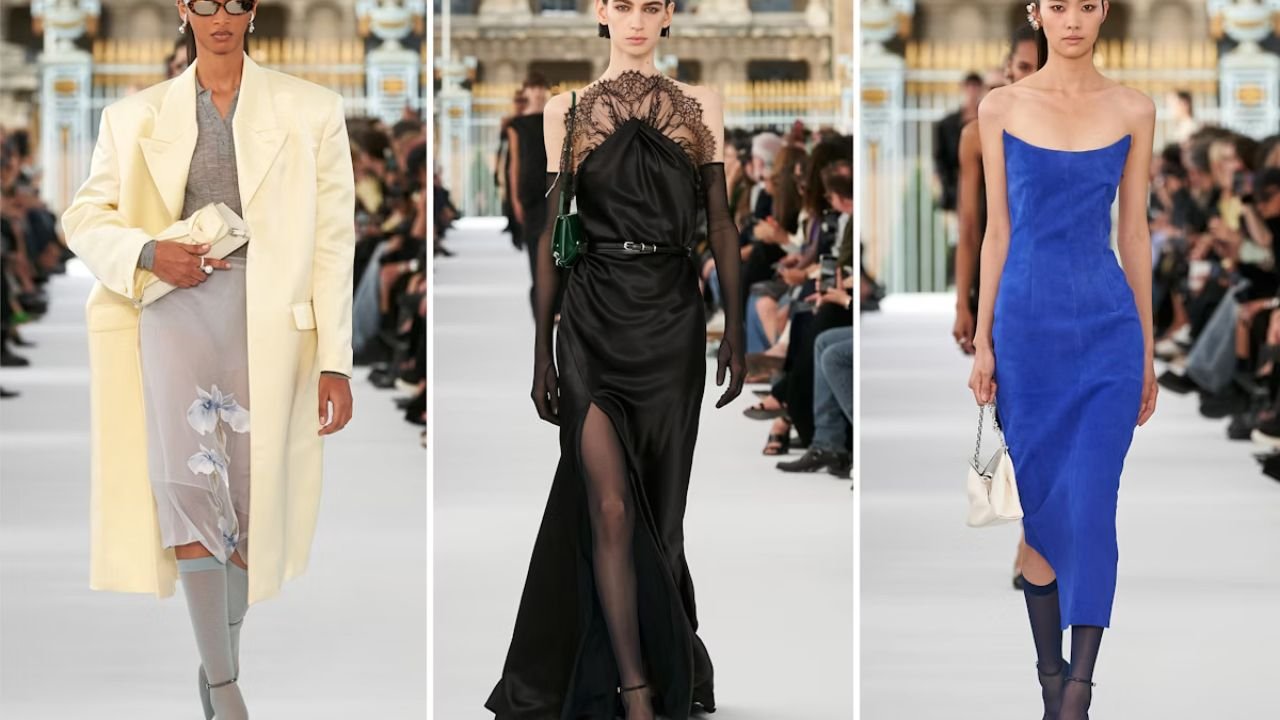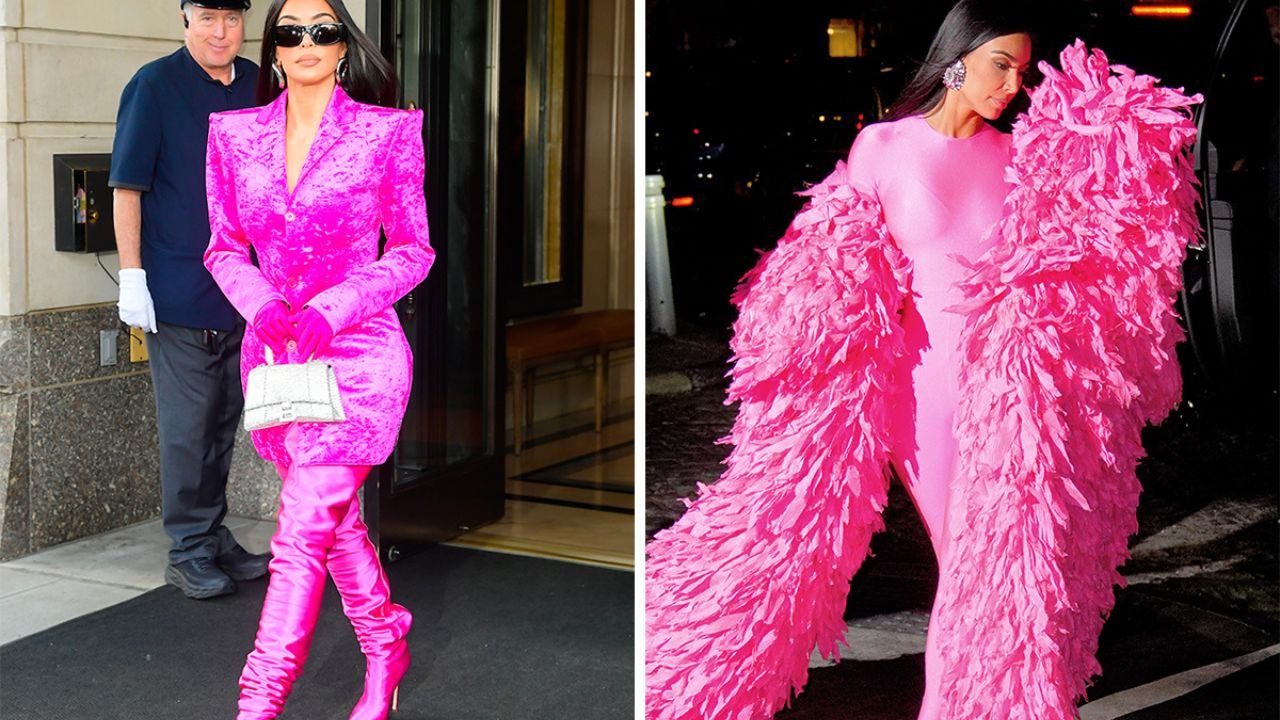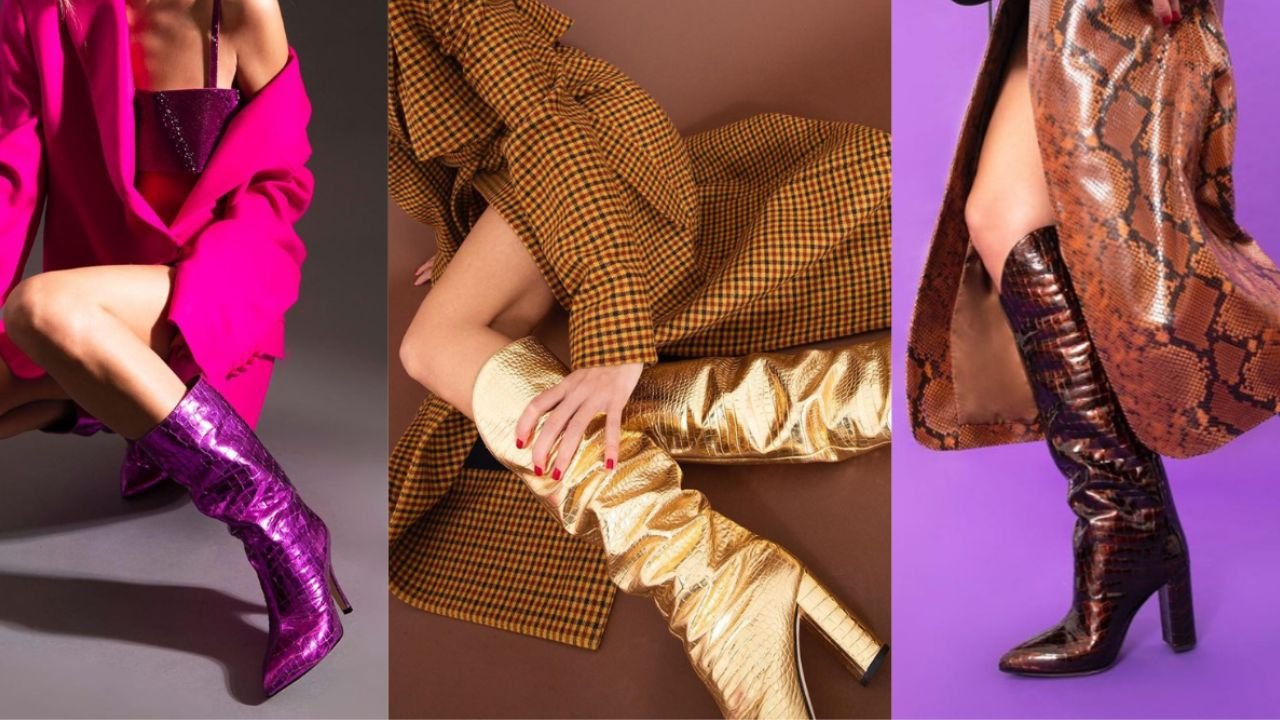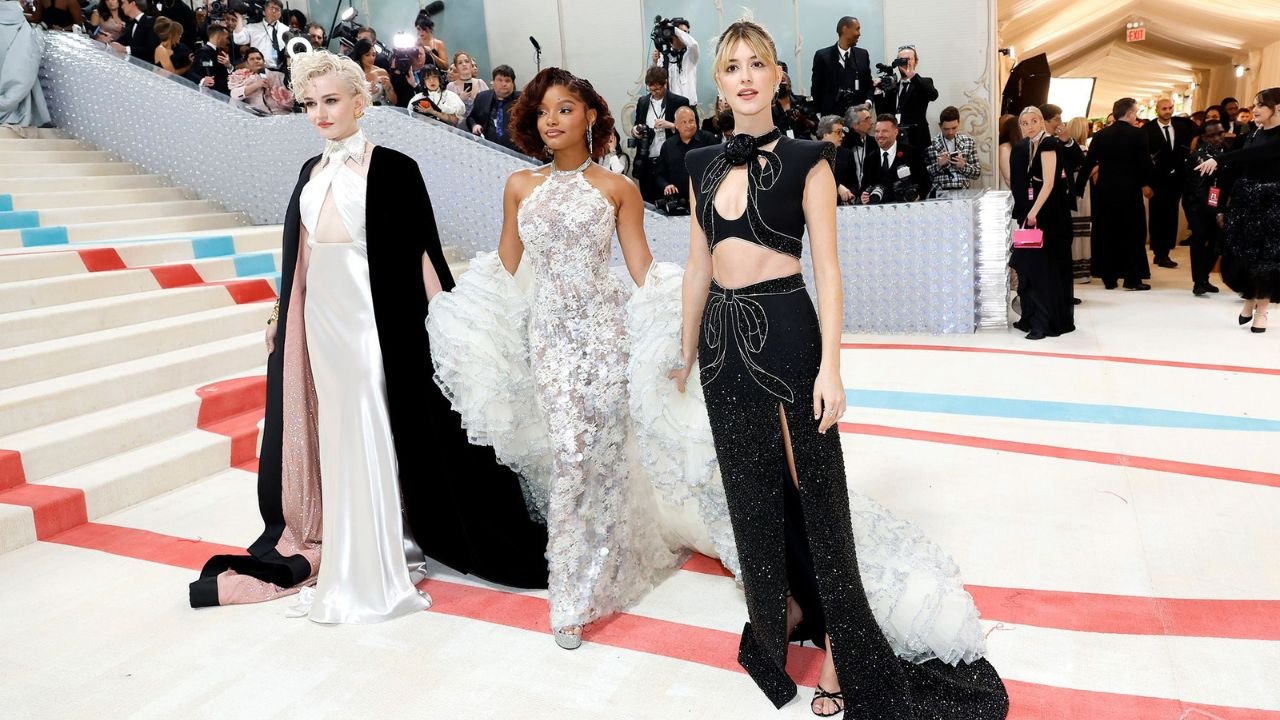Introduction
Paris Fashion Week stands as one of the most prestigious stages in the global fashion industry, showcasing the creativity, innovation, and cultural zeitgeist of designers from around the world. Among the lineup of high-profile shows and avant-garde presentations, Rick Owens—renowned for his dark, edgy, and often dystopian aesthetic—continues to push boundaries with his distinctive vision.
In a highly anticipated event, Rick Owens unveiled his latest collection titled “LIDO,” during the Fall/Winter 2024 Paris Fashion Week. This collection boldly explores themes of Gothic darkness, theatricality, and a haunting elegance that has become Owens’ signature. With its dark palette, sculptural silhouettes, and theatrical runway presentation, “LIDO” cements Owens’ position as a master of dark couture and conceptual fashion.
This article delves into the details of the “LIDO” collection, its inspirations, design elements, runway execution, and cultural significance, providing a comprehensive understanding of this pivotal moment in Rick Owens’ career and its impact on contemporary fashion.
The Context: Rick Owens’ Aesthetic and Artistic Vision
A Brief Background
Rick Owens, born in 1962 in Porterville, California, has built a reputation as one of the most influential designers in the realm of dark, minimalist, and avant-garde fashion. His aesthetic is characterized by a penchant for monochromatic palettes, elongated silhouettes, and a fusion of streetwear, couture, and architectural design.
Owens’ design philosophy often emphasizes rawness, deconstruction, and a gothic sensibility. His collections frequently evoke dystopian worlds, dystopian narratives, and a fascination with mortality and the macabre. Over the years, Owens has cultivated a loyal following among fashion insiders, celebrities, and art enthusiasts, all drawn to his dark poetry and sculptural forms.
Artistic Influences
Rick Owens’ inspiration often draws from a broad spectrum of sources—Gothic architecture, punk subculture, ancient civilizations, and dystopian literature. His fascination with the macabre and the theatrical manifests in his use of shadow, texture, and form.
His collections are as much about artistic expression as they are about fashion, often blurring the lines between wearable garments and art installations. Owens’ runway shows are renowned for their immersive and theatrical presentations, transforming fashion presentations into visceral experiences.
The “LIDO” Collection: Concept and Inspiration
Title and Theme
The collection’s title, “LIDO,” evokes imagery of decadence, nightlife, and a certain opulence intertwined with darkness. Historically, “Lido” refers to seaside resorts, often associated with glamour, escapism, and leisure. However, Owens’ interpretation imbues this term with a Gothic, almost haunted connotation—suggesting a space of decadence turned ominous, a liminal zone between allure and darkness.
The overarching theme of “LIDO” explores dualities—light and shadow, decadence and decay, beauty and morbidity. Owens reimagines a dystopian glamour, where the allure of nightlife and the mystique of Gothic culture merge into a haunting aesthetic.
Artistic and Cultural Influences
The inspiration behind “LIDO” draws from multiple sources:
- Gothic Architecture and Medieval Symbolism: The use of pointed arches, ribbed vaults, and ornate tracery in Gothic cathedrals influences the collection’s structural elements.
- Theater and Cabaret: The theatricality of nightclubs, burlesque, and cabaret performances—especially the legendary Parisian “Lido” cabaret—inform the sense of drama and spectacle.
- Dystopian and Post-Apocalyptic Narratives: Owens’ recurring fascination with dystopian worlds is evident in the collection’s dark palette and layered textures.
- Historical Fashion: Elements of Victorian mourning wear, Baroque ornamentation, and military uniforms are subtly woven into the designs.
Mood and Atmosphere
The mood of “LIDO” is intensely dark and theatrical. Owens employs a color palette dominated by blacks, deep charcoals, dark browns, and occasional metallic accents. The atmosphere is one of mystery, seduction, and subtle menace—an invitation to peer into a shadowy world of decadence and decay.
Design Elements and Key Pieces
Fabrics and Textures
Owens is renowned for his masterful use of fabric and texture, and “LIDO” is no exception. The collection employs:
- Heavy Wool and Tartan Plaids: Evoking a Gothic, Victorian sensibility.
- Silks and Satins: For a touch of decadence and fluidity.
- Leather and Suede: Adding texture and edge.
- Layered Mesh and Sheer Fabrics: Creating transparency and revealing glimpses of skin beneath.
- Deconstructed Knit and Tattered Edges: Reinforcing themes of decay and dystopia.
Silhouette and Construction
The silhouettes in “LIDO” are characterized by Owens’ signature elongation and volume:
- Oversized Coats and Capes: Dramatic, sweeping forms with exaggerated shoulders and elongated hems.
- Layered Draping: Complex layering of fabrics creating depth and shadow play.
- Structured Tailoring: Military-inspired jackets with sharp lapels and asymmetric cuts.
- Tight Corsetry and Bustiers: Contrasting with flowing skirts and wide-legged trousers.
- Distressed and Deconstructed Elements: Frayed edges, cut-outs, and asymmetry evoke a sense of decay.
Key Pieces
- Gothic Trench Coats: Long, structured, with ornate detailing and textured fabrics.
- Layered Robes and Capes: Voluminous, with intricate draping and embellishments.
- Leather Harnesses and Harness-Style Accessories: Adding a raw, edgy tone.
- High-heeled Boots and Platform Shoes: Emphasizing height and commanding presence.
- Mask-Like Headpieces: Theatrical accessories that transform models into otherworldly beings.
- Metallic Accents and Embellishments: Silver and gunmetal hardware, rivets, and chains.
Color Palette
The collection’s palette is predominantly monochromatic:
- Black: The core, symbolizing Gothic darkness and mystery.
- Deep Charcoal and Slate Gray: Variations to add depth.
- Dark Brown and Burgundy: Occasional accents.
- Metallic Silver and Gunmetal: Used for hardware and embellishments.
- Subtle hints of deep red and burgundy: For dramatic accents.
Runway Presentation: A Theatrical Showcase
Venue and Atmosphere
The “LIDO” show took place in a venue that evoked an old-world Gothic theater—dimly lit, with a haunting ambiance. The runway was designed to resemble a decayed cabaret stage, with worn velvet drapes, flickering candle-like lighting, and fog effects creating a mysterious atmosphere.
Music and Sound Design
The soundtrack was an atmospheric blend of dark ambient music, haunting vocals, and echoing sounds reminiscent of Gothic church choirs. The music underscored the theatricality and helped immerse viewers into Owens’ dystopian Gothic universe.
Model Presentation and Choreography
Models moved with deliberate, slow strides, emphasizing the sculptural quality of the garments. Some appeared as ghostly apparitions, with headpieces resembling masks or veiled faces, enhancing the otherworldly vibe.
Audience Reception
The audience was enthralled by the immersive experience, with many praising Owens’ ability to blend high fashion with theatrical storytelling. The show received widespread acclaim for its artistic audacity and visual impact.
Cultural and Artistic Significance
A Return to Gothic Roots
“LIDO” signifies Owens’ ongoing exploration of Gothic themes—dark romance, decay, and theatricality—yet it pushes the boundaries further by integrating dystopian aesthetics and high-concept storytelling.
Challenging Traditional Fashion Norms
By emphasizing sculptural forms, deconstruction, and theatrical presentation, Owens challenges conventional notions of beauty and wearability, elevating fashion to an art form.
Reflecting Contemporary Cultural Currents
The collection resonates with current cultural themes—prevalence of dystopian narratives in media, renewed interest in Gothic subculture, and societal reflections on mortality and darkness.
Influence and Impact
“LIDO” sets a new benchmark for fashion shows—transforming runway presentations into immersive, experiential art installations. It also sparks conversations about the role of fashion as a medium for storytelling and social commentary.
Critical Reception and Industry Impact
Fashion Critics’ Perspectives
Most critics lauded Owens’ “LIDO” for its boldness, craftsmanship, and theatricality. It was seen as a masterful synthesis of fashion, art, and performance.
Influences on Contemporary Fashion
The collection’s innovative use of materials, silhouette manipulation, and immersive presentation influence subsequent designers exploring dark, theatrical themes.
Commercial Viability
While Owens’ aesthetic remains niche, his influence permeates mainstream fashion, inspiring collaborations, capsule collections, and runway trends emphasizing Gothic and dystopian elements.
Future Directions and Conclusions
The Evolution of Owens’ Artistic Vision
“LIDO” underscores Owens’ commitment to pushing artistic boundaries, blending dark romanticism with dystopian futurism. It suggests a future where fashion continues to serve as a platform for storytelling, cultural critique, and innovation.
The Broader Impact on Fashion and Culture
The collection exemplifies how fashion can transcend mere apparel, becoming an immersive experience that challenges perceptions, evokes emotion, and reflects societal anxieties.
Final Reflection
Rick Owens’ “LIDO” collection during Paris Fashion Week reaffirms his position as a visionary artist and designer. It encapsulates a gothic fantasy that is both haunting and beautiful—an ode to the dark allure of the night, and a testament to fashion’s power to explore the depths of human emotion and cultural subconscious.




